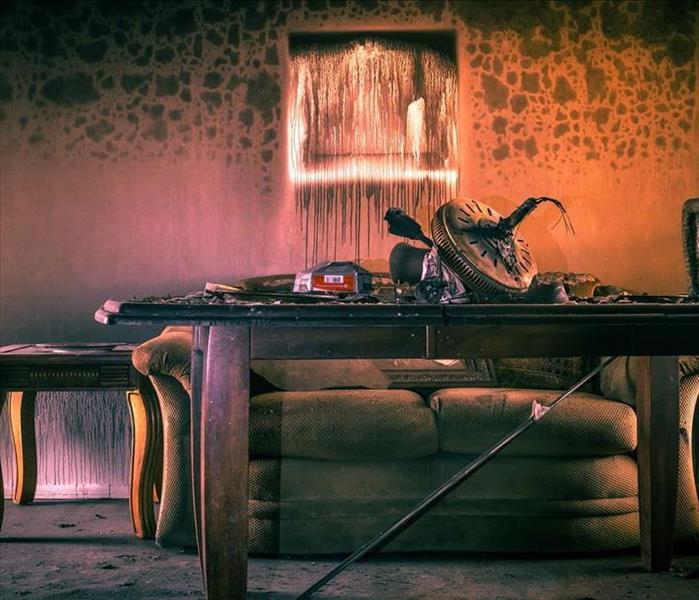Classes of Fire Damage
9/16/2022 (Permalink)
According to the NFPA, the number of fires your household can expect in an average lifetime is five. Any fire regardless of size will cause damage to your property. Fire damage is classified into six different classes and the type of fire damage can be classified in two ways.
Six Types of Fire Damage:
- Fires are classified into six different classes. These classes are Class A, Class B, Class C, Class D, Class E, and Class F.
Class A:
- Involves flammable solids, plastics, paper, rubber, cloth, and wood
Class B:
- Damage is caused by flammable solids that became liquids and by liquids. Examples of these types of substances are gasoline, petrol, oil, plastics, and paints. Cooking oils and fats are excluded from this class.
Class C:
- Involves flammable gasses such as hydrogen, natural gas, butane, and propane
Class D:
- Damage is caused by combustible gasses such as potassium, sodium, and magnesium
Class E:
- This class is a combination of Class A and Class B but it involves electrical elements
Class F:
- Damage is caused by cooking oils and fats. Cooking oils and fats are in their own class because the fire is usually hotter and more damage is caused.
Fire extinguishers are not one size fits all. Make sure you read the label on your fire extinguisher to see what types of fires it can put out. Some fire extinguishers are water based which would not be safe to use on a Class E fire. Also, check the expiration date on your fire extinguisher to make sure it is still good to use in case of an emergency.
Types of Fire Damage
Most insurance companies use two classifications for fire damage. These categories are primary damage and secondary damage.
Primary Damage:
- Damage is caused by direct flames to the structure or to objects inside of the structure
Secondary Damage:
- Damage is caused by corrosive substances, smoke, and water from putting the fire out.
- Secondary damage typically causes the most damage to the structure. This is because soot and smoke can work its way throughout the structure.
If you experience a fire in your home, the first step you should take is to call the fire department. Your second step should be to reach out to your insurance agent. Your final step should be calling SERVPRO. All SERVPRO franchises are available 24/7 with highly trained restoration technicians. SERVPRO specializes in fire and water damage and will get your property looking “Like it never even happened”.
Tracie "Dusty" Nichols
304-291-3434





 24/7 Emergency Service
24/7 Emergency Service
